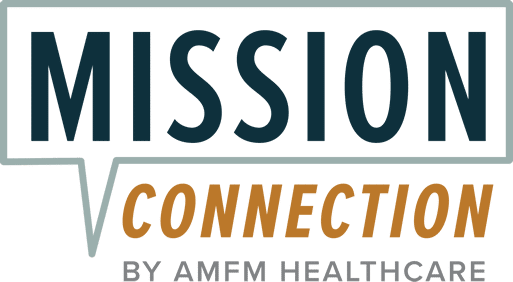Preparing for Mental Health Treatment: Types of Treatment Plans

We all know the familiar feeling of stubbing a toe – the dull pain from the pesky corners that always seem to get in our way, often with no physical sign of damage left in its way. Yet, it doesn’t take more than a couple of toe stubs for our minds to adapt by creating a mental map noting the safe regions and flagging the potential pain-inducing ones. Physical injuries often come with clear triggers. You stub your toe, identify where you hit it, and mentally take note to avoid the space. Simple.
But when it comes to mental pain, that can be a different story. We often go about our day colliding with triggers, collecting invisible bruises. Unlike how we can identify what caused us physical pain, emotional hurt doesn’t always have a clear source.
Emotional pain sometimes becomes a mix of lingering heaviness, a sudden drop in energy, or a wave of sadness that feels like it emerged from nowhere, transforming into a collection of emotions with no trigger to connect them with. For many, managing life without continuing to add to the growing weight becomes incredibly difficult.
But just as we go to a doctor for physical pain that feels too big to handle on our own, therapy can help sort through our emotional pain, identify patterns, and uncover hidden triggers. Over time, it can train our minds to recognize triggers and emotional pain with the same clarity and self-awareness we use to identify physical pain.
On this page, we’ll cover the types of mental health treatment plans available to you to help you gain an understanding of and a handle on your emotional pain. As you learn about the different resources of help available to you, you can make an informed decision about choosing the right kind of therapy for yourself while also learning self-help strategies for your growth and healing journey.

What Is a Mental Health Treatment Plan?
A mental health treatment plan is the first important step of your therapy journey. Created by you and a mental health professional, it outlines what you can expect from therapy.
How Treatment Plans Guide Mental Health Recovery
What’s Included in a Therapy Treatment Plan?
Topics you may discuss:
Current symptoms- History of your symptoms
- How your symptoms impact your daily life (such as work, relationships, school, etc.)
- Any medication you take or have tried (medical or psychiatric-related)
- Your personal and family background (this can include discussing your family dynamics, what kind of lifestyle you had as a child, etc.)
Next, your provider will create a diagnosis and work with you to set goals for a personalized plan. Here is an example of what this might look like:
Your Symptoms: Difficulty concentrating, restlessness, difficulty making decisions, struggling to make friends and maintaining relationships.- Your Provider’s Diagnosis: Anxiety
- Short-Term Goals: Develop coping strategies to reduce restlessness, improve concentration, and create a system for easier decision-making.
- Long-Term Goals: To have fewer symptoms occur and improve your social life.
- Your Goals: Develop meaningful connections and help with concentration.
- Week One Plan:
- Cognitive Behavioral Therapy
- 10 minutes of daily journaling to unpack your thought process (related to your concentration goal).
- Equipping you with grounding techniques and setting a goal to meditate 10 minutes daily (to improve restlessness).
Our Treatments At Mission Connection
At Mission Connection, we offer a range of approaches to aid your mental health journey. Often, when people start therapy, it can be challenging to sit down and have a conversation about their heavy emotions. That’s why we offer various options to make your journey comfortable.
Cognitive Behavioral Therapy (CBT)
CBT is used to help people identify and change their negative thought patterns. Common strategies include:
- Journaling
- Gently exposing yourself to your triggers
- Challenging your negative thought patterns through conversation with your therapist.
Trauma-Focused Therapy
Trauma-focused therapy aids in working through traumatic experiences and helps people process trauma safely. Common strategies include:
- Eye movement Desensitization and Reprocessing (EMDR) – To help you process your memories and move past stuck traumatic memories without talking about them.
- Trauma-focused Cognitive behavioral therapy (TF-CBT) – It’s similar to CBT but is specifically used to help process traumatic events and memories through exposure.
Telehealth and Online Talk Therapy
Online talk therapy occurs through a secure platform, such as video calls, phone calls, or messaging. Because of its accessibility and flexibility, it can be an excellent option for people who prefer their own space or don’t have access to an in-person facility.
Exposure Therapy for Anxiety
Exposure therapy is structured to help you gradually expose yourself to fears or triggers in a safe setting to reduce avoidance and fear over time. Common strategies include:
- Challenging your fears through talking with your therapist or support group.
- Engaging with your fears in reality, imagining, or using virtual reality to practice facing your triggers in a safe environment.
Mindfulness Therapy
Mindfulness therapy helps develop your present-moment awareness and acceptance of thoughts and feelings. Common strategies include:
- Meditation
- Body scans
- Breathwork
- Mindfulness
Humanistic Therapy
Humanistic therapy focuses on personal growth by developing an unconditional positive image of yourself. It can help you improve your self-esteem and create a stronger self-identity. Common strategies include:
- Listening to your thoughts and feelings.
- Assisting you through transition moments in life.
- Exploring and helping you understand your purpose in life.
Dialectical Behavior Therapy (DBT)
DBT is a form of CBT that focuses on improving emotional regulation through balancing acceptance and change. Common strategies include:
- Stress tolerance skills (cold exposure, breathing exercises, grounding techniques)
- Mindfulness and emotional regulation tools
- Role-playing conversations to improve communication in relationships
Emotion-Focused Therapy (EFT)
EFT is therapy focused on helping people become more aware of their emotions through learning how to process and use them to guide change. Common strategies include:
- Expressing and labeling emotions in a safe setting
- Role-playing different parts of yourself to process hidden emotions
Transcranial Magnetic Stimulation (TMS)
TMS is a medical treatment that uses magnetic fields to stimulate nerve cells in the brain. This is often used when therapy and/or medication hasn’t been effective. It involves electrical pulses to help the brain reactivate activity in specific areas of the mind.
Types of Psychiatric Treatment Plans
A psychiatric treatment plan is a structured plan created by a psychiatrist (a medical doctor specializing in mental health) that includes diagnosis, medication management, and ongoing evaluation.
A psychiatric treatment plan includes:
- A medical diagnosis
- Prescription medication
- Tracking side effects and treatment effectiveness
- Clear goals and timelines to reduce or stabilize symptoms
This treatment plan would be best for people who:
- Have severe, persistent symptoms that may be interfering with their daily life
- People who May have a biological or neurological issue linked with their mental health concerns.
- Haven’t seen a change in their symptoms after therapy or self-help techniques
- Have a family history of mental health conditions that have proven to respond well to medication
A psychiatric treatment plan can be a part of an integrated plan that includes therapy, lifestyle changes, and developing self-help strategies.
Inpatient vs. Outpatient Treatment Plans
At Mission Connection, we offer both inpatient and outpatient treatment plans based on your needs.
Inpatient Treatment
Inpatient treatment plans are structured live-in programs for people to stay at a mental health facility. These programs provide people:
- A safe environment
- 24/7 support
- A structured routine
- An environment separate from triggers
Outpatient Treatment
Outpatient treatment involves receiving in-person support such as therapy, psychiatric care, or group counseling while continuing to live at home.
These programs provide people:
- Flexibility to maintain their daily responsibilities while getting help
- Privacy and independence
- Practice integrating the strategies they learn into their daily lifestyle.
How to Create a Personalized Mental Health Treatment Plan
Although creating a treatment plan with a mental health professional is ideal, building one yourself can help you gain clarity and develop a sense of agency in your healing journey. Here are steps you can follow to develop your treatment plan.
1. Conduct a Self-Assessment
A self-assessment is crucial to an effective treatment plan. There are two essential steps to this process.
- Journaling and Tracking Your Current Mental Status: This can look like writing freely about your emotions, thoughts, and behaviors, observing patterns, and tracking your mood.
- Online Mental Health Tests: Mission Connection offers a range of tests to strengthen your self-assessment. While these tests are not a substitute for clinical diagnosis, they can help you understand your mental health and aid in your decision to seek professional support.
2. Choosing a Therapy Approach That’s Right for You
Once you’ve identified the areas you want to work on, here are some questions to ask yourself to decide the kind of support you need and what goals to focus on:
- Do I want someone to guide me, or do I just need independent strategies that I can apply to my daily life?
- How much time and energy can I commit right now to improve my mental health?
- What type of therapy do I resonate with?
- Would I benefit more from in-person sessions, online therapy, or group therapy?
3. Self-Help Strategies to Kickstart Your Healing Journey
Here are a couple of techniques to help you develop the foundation of your healing journey:
Mindfulness3: A practice of being in the moment through paying attention to thoughts and grounding yourself in the present. You can achieve this through meditation, noticing sensations throughout your body, and focusing on one task at a time when working.- Cognitive Reframing4: A practice of challenging your negative thoughts and replacing them with positive ones. Start by freely journaling your thoughts. Then, revisit to identify negative thought patterns and practice challenging them with positive thinking.
4. Identify Necessary Lifestyle Changes
Diet: Reduce sugar, processed foods, and caffeine, which can spike anxiety and low mood. Instead, aim for a balanced diet of whole foods rich in vitamins.5- Routine: Build a consistent sleep routine and time blocks for rest, work, physical activity, and hobbies.
- Environment: Declutter your space and create an environment that brings peace. Surround yourself with supportive people and reduce your interactions with toxic ones.
5. Don’t Forget Your Support Network
A support system plays a significant role in your mental health journey. Who are some people in your life who make you feel seen, heard, and safe? Here are some ways you can build a support system you can lean on:
- Join communities where your interests or values align (book clubs, fitness classes, online forums, etc.)
- Joining group therapy or a support group can be especially helpful if you struggle with building connections by exposing yourself to like-minded people on a similar journey.
6. Keep Track of Your Mental Health Recovery
Like physical health, mental well-being is not always linear and requires care, patience, and self-compassion. There will be progress, setbacks, and plateaus, all of which are normal parts of your journey. The key to your growth is to persist in self-awareness, build habits, and seek help when needed. Mental well-being is a journey, not a destination.
Mental Health Treatment at Mission Connection
At Mission Connection, our goal is to provide you with support, flexibility, and structure to foster your mental well-being. We value your needs at the forefront to give you what you need to achieve your goals and mental well-being.
In this article, you learned about the different treatment plans offered at Mission Connection, and how you can help yourself through self-understanding. With a clear understanding, how can Mission Connection help you with your mental health journey?
Call us today at 866-825-7752 or get started here to begin your journey.

References
- Tsai, K. H., Moskowitz, A. L., Lynch, R. E., Daleiden, E., Mueller, C., Krull, J. L., & Chorpita, B. F. (2016). Do Treatment Plans Matter? Moving From Recommendations to Action. Journal of Clinical Child & Adolescent Psychology, 48(sup1), S72–S78. https://doi.org/10.1080/15374416.2016.1204922
- Bertoni, B. (2024, May 31). Assessment and Diagnosis in Counseling: Strategies for Understanding Clients. Keiser University. https://www.keiseruniversity.edu/assessment-and-diagnosis-in-counseling-strategies-for-understanding-clients/
- Mayo Clinic. (2022, October 11). Mindfulness exercises. Mayo Clinic. https://www.mayoclinic.org/healthy-lifestyle/consumer-health/in-depth/mindfulness-exercises/art-20046356
- SPM, P., & Seethalakshmi. (2021). Cognitive reframing-“Mind trick”-change your thoughts-change your world-to keep you going. International Journal of Advanced Psychiatric Nursing, 3(1), 01–03. https://doi.org/10.33545/26641348.2021.v3.i1a.44
- Sawchuck, C. (2017). Find out how food and anxiety are linked. Mayo Clinic. https://www.mayoclinic.org/diseases-conditions/generalized-anxiety-disorder/expert-answers/coping-with-anxiety/faq-20057987
